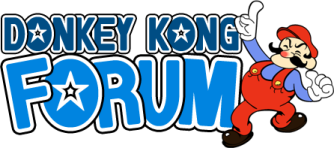It doesn't make sense story-wise, but it definitely makes sense in terms of creating intrigue and getting more quarters into the machine.
If you complete one loop, then go back to the barrel board, you might think that's all there is. But then you complete that barrel board, and all of a sudden you're on a new board (the springs). You start to wonder if there's more. So you keep playing, putting more quarters in, and eventually reach the third loop where you discover yet another new board (the pie factory). Is there more? You don't know. Want to see that mysterious pie board again? Better keep playing.
Even though the original Japanese game just cycles 1-2-3-4, the code actually strongly implies that shuffling around the screen order was intended to (at the very least) be possible.
There's a table at #3A65 with 20 "slots" for the screen order. In the US release it's 1,4,1,3,4,1,2,3,4,1,2,1,3,4,1,2,1,3,1,4. In the Japanese release, it's simply 1,2,3,4 repeated five times. If the game were only intended to go 1,2,3,4 and never any other way, then there would have been no reason to set aside 20 bytes for this table, since 16 of them are redundant.
In addition, the text for "125m" and "150m" are options explicitly built-in for the "how high?" screen, and the part of the code that determines how many stacked monkeys to draw does check for 6 monkeys, which you never see in the Japanese version since all levels top out at 100m, but these options are in the original Japanese release. Why would they add 125m and 150m text blocks and a monkey-stack limit of 6 if they were never intended to be used? So I'm thinking that they actually DID code the board-slot scheme with flexibility in mind, in order to keep options open for easy tweaking later.
NOA took advantage of that, and again I'm pretty sure it just came down to adding replay value.






